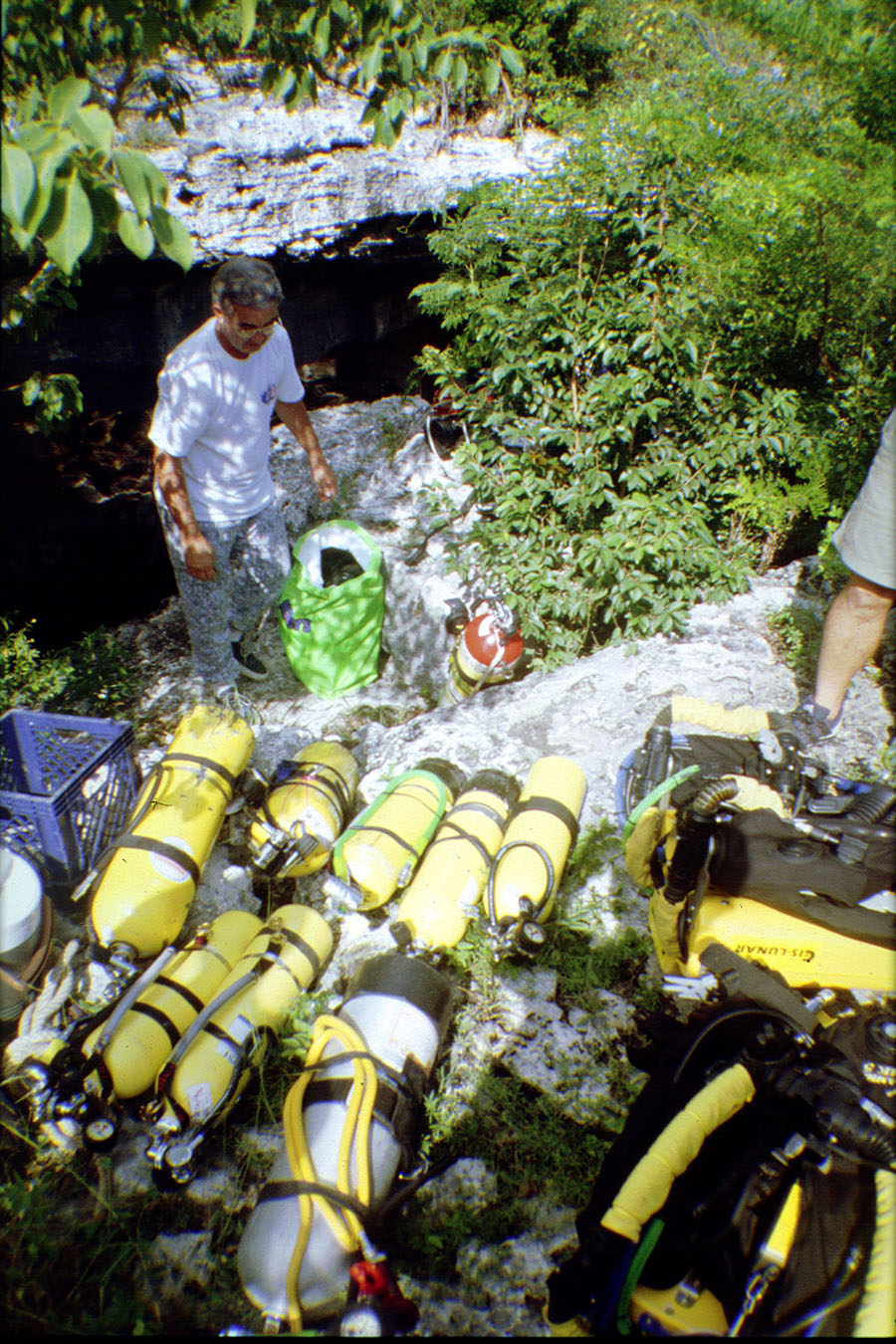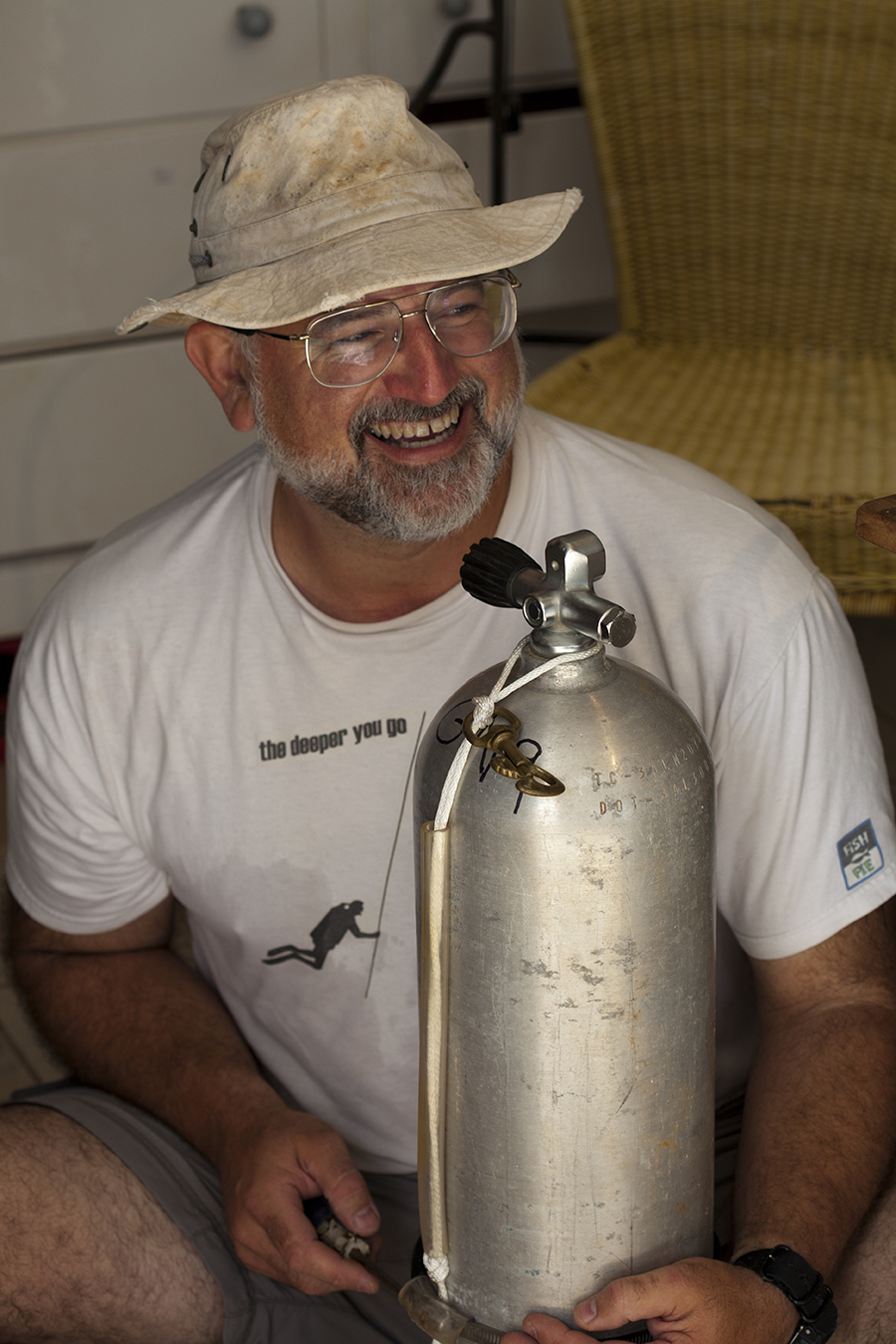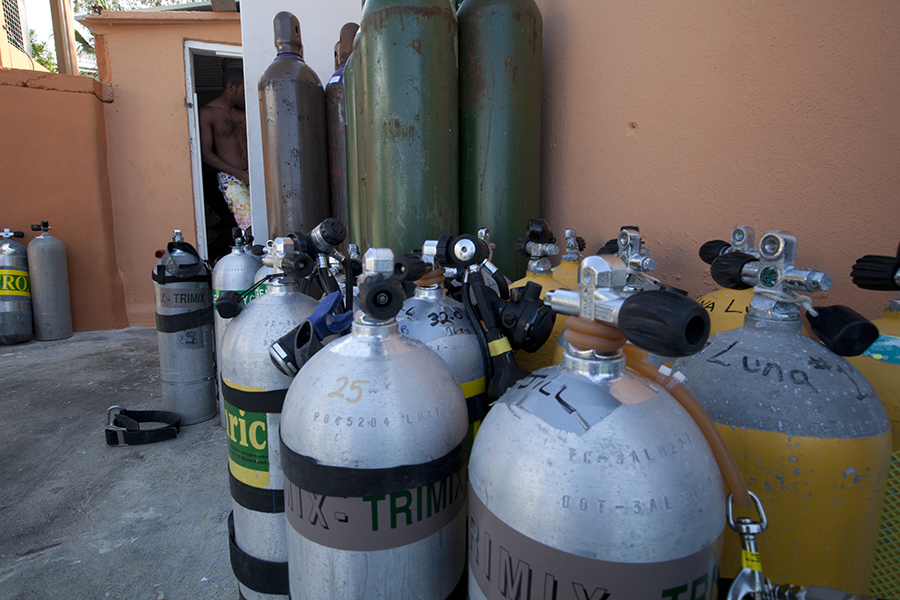


In My Experience
Nearing twenty years of rebreather cave diving, I have witnessed many dives that resulted in open circuit bailout. Here is a partial incident list:
Cockroach ate edges of non-return valve leading to carbon dioxide build-up
Diver sucked non-return valve through plastic web during negative loop check
Rubber hose tore open where it attached to rebreather head (dry-rot, age)
Rebreather laid horizontally in car and settled scrubber contents leading to almost immediate breakthrough
Diver failed to put scrubber canister in unit
DSV lever unscrewed and came off in diver’s hand leaving hole into loop
Mouthpiece torn and unusable
Wet sensors completely unreliable
Mysterious electronics failure leads to unreliable sensors
Low battery voltage causing rebreather to reset and inject oxygen
Lithium battery explodes out of back of rebreather
HMI light causes unshielded displays and HUD to turn off
Diver over-breathes counterlungs in high flow cave
Scrubber used beyond manufacturer’s specifications
Catastrophic failures on open circuit scuba are usually manifested in events like high-pressure seat failure in a first stage, hose rupture or manifold damage, burst disk and valve breakage. Technical divers spend ample time rehearsing valve drills and abort scenarios, since gas loss equates to time pressure. They manage the emergency and get home quickly!
On a rebreather, failures more commonly develop slowly. In some ways, a hose rupture or first stage failure is one of the easiest issues to deal with. In many cases, the diver simply reaches back, turns off the valve and feathers it on and off as needed or simply bails to the off board bailout tank.
In the early days of rebreather training, we used to put a considerable emphasis on keeping the diver on the loop. These days, we teach students the myriad options available to them in emergency scenarios, but encourage divers to bailout to open circuit if they have any doubt about the safety of what they are breathing or if the task load is too large. If in doubt, bail out.
Examining the type of failures that could lead to the necessity of an open circuit bailout will help the diver choose how much gas they wish to carry.
Confusing Data
When the face of an oxygen sensor gets wet, it will tend to read low and slow. Sensors that get wet on the wiring side may read high. If a diver is in doubt of their sensor readings, a vigorous flush with diluent gas will help them determine if any of the sensors are reliable and accurate. After determining which, if any sensors, are accurate, the diver may allow the system’s voting logic to get them out of the cave or run the unit manually with the single accurate sensor during their aborted dive. If the diver is at all uncertain about the accuracy of their sensors, from flooding, poor calibration, current limitation in old sensors or other electronic failures, then an open circuit bailout is not just warranted but is the only safe option.
Catastrophic Loop Failure
Mechanical problems may also cause catastrophic loop failures that demand open circuit bailout. Ripping or tearing a breathing hose in a tight passage, counterlung tears, dry-rotted rubber hoses, lost or torn mouthpieces and breakage of the DSV lever itself are all examples of failures that leave the loop unrecoverable.
Carbon Dioxide Breakthrough
Carbon dioxide issues are the most insidious problems leading to unrecoverable loop failure. Partial flooding may lead to channeling of scrubber material just as easily as improper packing. Using carbon dioxide material beyond its specification may also lead to rapid breakthrough. Damaged non-return valves could also lead to carbon dioxide build-up.
Given the scenarios above, I have personally chosen to carry ample open circuit to get myself out of the cave for almost all of my dives. In a few cases of extreme exploration, my team has opted to share bailout beyond a certain point of penetration. I find that carrying two, 80 cubic foot tanks in a sidemount style is very easy and comfortable and will get me out of most dives. I use smaller tanks for shorter penetrations. Beyond that, staged gas is preferred. Understanding that carbon dioxide issues will significantly elevate the surface air consumption rate of an exiting diver, I am very conservative with gas planning.
Both IANTD and the NSS-CDS have adopted a standard for bailout gas, requiring that a dive team carry 1.5 times enough gas to get a single diver out of the cave. Arguably, this results in greater team conservatism than is offered to open circuit divers in a pinch. However, it also leaves a team of three with the need to stay together and swap tanks throughout the exit so that a diver is never left without open circuit gas. Other divers have taken drastically different approaches. Some advocate a one-hour rule that gets every diver topside with one hour of any consumable in reserve, whether it is batteries, gas, scrubber or bailout.
My best advice to rebreather divers is to make a careful risk assessment prior to their dive and visualize the worst-case possible scenario. Only then, can you make the right decision for you and your team about the amount of gas to carry in reserve.
